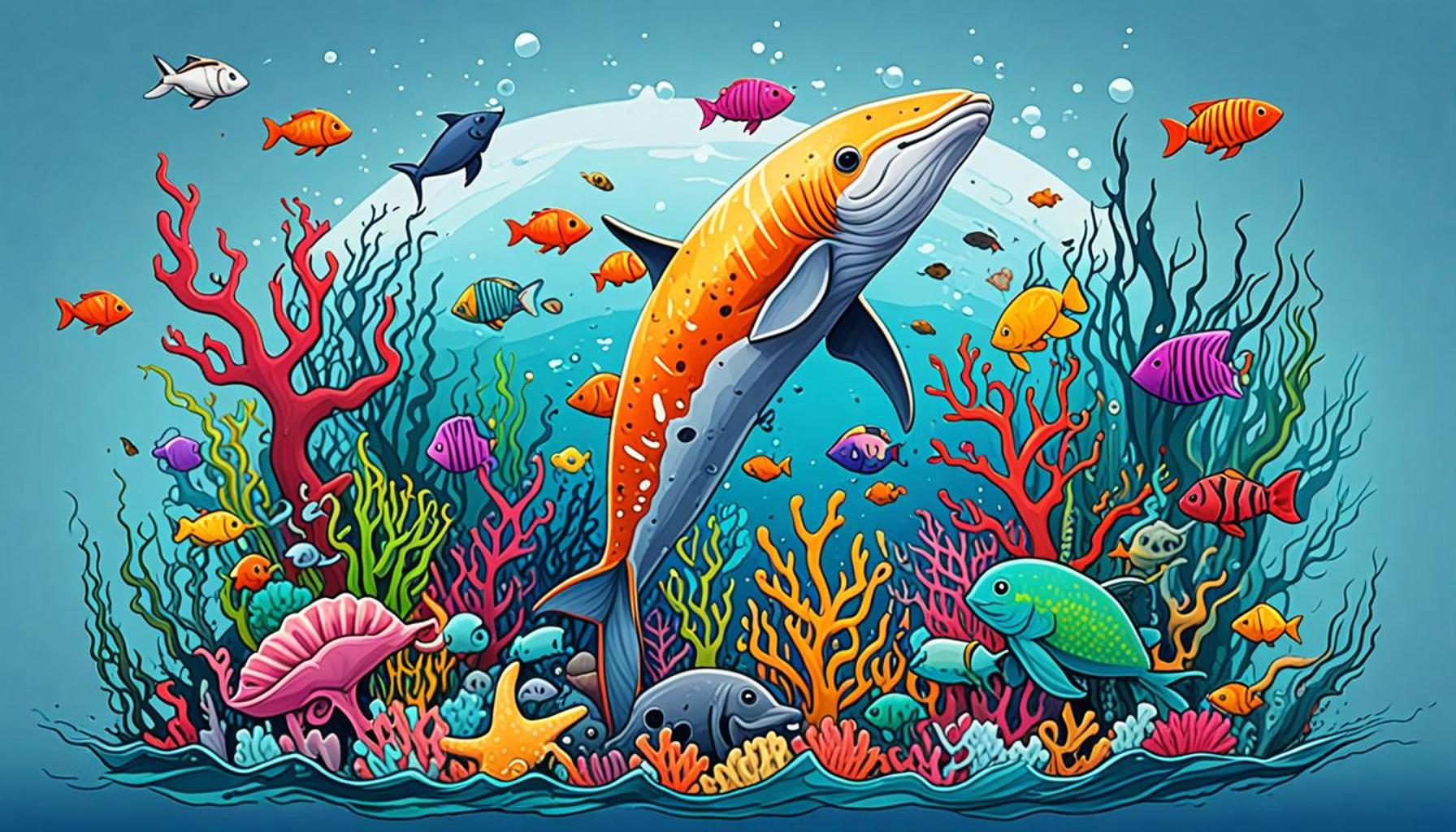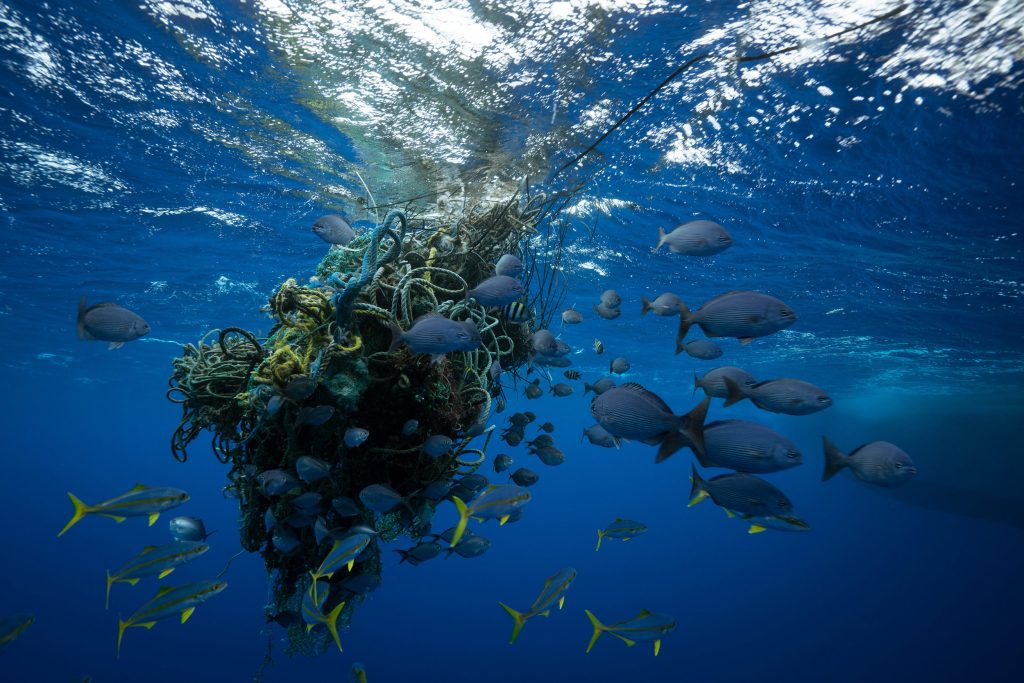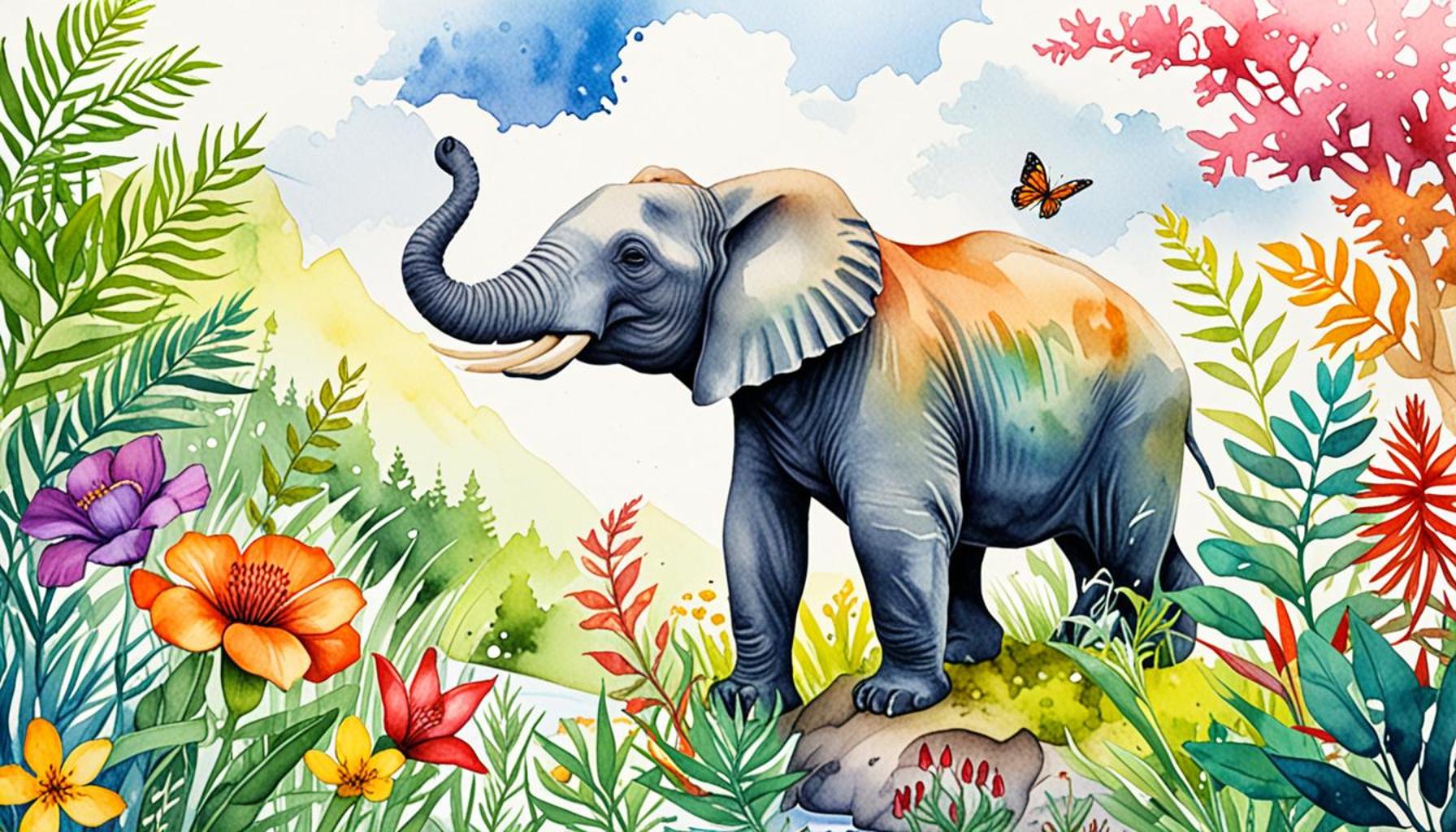Marine Wildlife Threats Pollutions Impact on Ocean Life

The Fascinating World of Marine Wildlife
Every ocean holds a unique treasure trove of marine wildlife, teeming with life that captivates scientists and enthusiasts alike. From the majestic blue whale, the largest animal on the planet, to the vibrant clownfish, famous for its relationship with sea anemones, these species are not just beautiful; they play essential roles in their ecosystems. The intricate web of life in our oceans is both intricate and delicate. However, various dramatic changes, predominantly human-induced, threaten their survival.
The Impact of Pollution
Pollution is one of the most pressing issues impacting ocean life today. It manifests in alarming ways, each contributing to the deterioration of marine environments. For instance, consider the billions of tons of plastic waste that our society generates. This plastic often ends up in the ocean, where it takes decades to decompose, harming marine life. Sea turtles have been found with plastic bags in their stomachs, mistaking them for jellyfish, leading to malnutrition or death. The Great Pacific Garbage Patch is a notorious example, accumulating an estimated 1.8 trillion pieces of plastic, impacting both wildlife and ecosystems.
- Chemical runoff from agricultural practices significantly contributes to ocean pollution. Fertilizers and pesticides washed into waterways can lead to toxic algal blooms. These blooms can create dead zones, areas in which oxygen levels are too low to sustain most marine life. The Gulf of Mexico is particularly vulnerable, with an annual dead zone the size of New Jersey.
- Oil spills also pose a grave threat to marine habitats. The Deepwater Horizon oil spill in 2010 is one of the most devastating examples in U.S. history, releasing millions of barrels of oil into the Gulf of Mexico. This disaster had long-term ecological impacts, decimating local fish populations and damaging the breeding grounds crucial for various species.
These pollutants pose severe threats to marine biodiversity, disrupting the delicate balance of ocean ecosystems. Studies reveal that over 800 species worldwide are negatively affected by marine litter, showcasing the pervasive impact of human actions on life beneath the waves. Meanwhile, some areas, such as parts of the Caribbean, have experienced drastic declines in fish populations due to pollution and overfishing.
Climate Change: A Compounding Factor
Climate change, fueled by human activity, further exacerbates the challenges faced by marine ecosystems. Warmer ocean temperatures not only threaten the survival of coral reefs, vital to marine biodiversity and coastal protection, but they also contribute to shifts in marine species distribution. For instance, as waters warm, species like cod are moving northward, disrupting traditional fishing industries in places like New England.

Understanding the interplay between pollution and marine life is key to preserving these vital ecosystems. It calls for collective responsibility and proactive measures, urging individuals and communities to reduce pollution output, protect marine habitats, and advocate for policies that foster sustainable practices. By nurturing our oceans, we not only safeguard the spectacular wildlife within them but also ensure the health of our planet for future generations.
CHECK OUT: Click here to explore more
Pollution: A Silent Invader of the Oceans
The oceans, while vast and seemingly resilient, are under siege from a relentless tide of pollution that poses a direct threat to marine wildlife. This pollution can take many forms, each with devastating consequences for oceanic ecosystems. One of the most visible and alarming is plastic waste. From the shores of California to the coral reefs of Florida, plastic debris balloons with our consumer habits, frequently ending up in the ocean. Research indicates that over 8 million metric tons of plastic enter the seas every year, accumulating in swirling gyres and creating hazardous zones for marine life.
Ingesting plastic is only one aspect of the extensive damage it inflicts. Marine creatures, including fish, seabirds, and marine mammals, can become entangled in debris, leading to suffocation or drowning. The impact isn’t limited to individual species; entire populations can decline due to the toxin-laden food chain that emerges when plastics break down into microplastics. These particles are tiny but are found in the bellies of fish commonly consumed by humans, raising alarm as they infiltrate the global food supply.
The Chemical Contaminants: A Hidden Danger
Chemical runoff from urban and agricultural areas is another substantial contributor to marine pollution. Pollutants like heavy metals, nutrients from fertilizers, and toxic pesticides seep into waterways and eventually reach the ocean. Toxic algal blooms, fueled by nutrient overloads, can produce dangerous substances that lead to fish kills and threaten marine mammals. In specific regions, such as the Chesapeake Bay, massive algal blooms have rendered once-thriving fishing grounds nearly lifeless.
- Increased acidity from carbon dioxide absorption is yet another warning sign. The ocean absorbs nearly a quarter of carbon dioxide emissions, causing a drop in pH levels that disrupts the ability of shellfish to form their shells and can devastate coral reefs, which rely on calcium carbonate for structure.
- Heavy metals, including mercury and lead, accumulate in marine ecosystems, entering the food web and bioaccumulating in larger species, thereby posing health risks for humans and wildlife alike. Species like tuna and swordfish are among those particularly affected, becoming hazardous for consumption over time.
Amidst these threats, oil spills continue to wreak havoc on marine ecosystems. The immediate aftermath of an oil spill can be catastrophic, leading to the death of fish and marine mammals while also decimating habitats essential for reproduction and growth. Even after cleanup efforts, the long-term effects can linger, with some oil components remaining in the environment for decades. The fallout from incidents such as the Exxon Valdez spill in 1989 and the Deepwater Horizon spill in 2010 exemplifies the lingering scars left by such disasters on local marine ecosystems.
As we delve deeper into the impacts of pollution on marine wildlife, it becomes clear that the health of our oceans is inextricably linked to human activity. Our actions on land reverberate through the waves, affecting not just aquatic life but the overall climate and health of the planet. Recognizing these connections is critical for advocating for environmental policies aimed at mitigating these pervasive threats. It is through collective awareness and action that we can hope to safeguard our oceans and the magnificent life they harbor for generations to come.
Understanding Marine Wildlife Threats and the Impact of Pollution
The health of our oceans is under severe threat due to a range of pollution factors that not only affect marine wildlife but also disrupt the delicate balance of ocean ecosystems. Plastic pollution has reached alarming levels, with millions of tons of waste entering the ocean annually, causing harm to marine creatures who ingest or become entangled in debris. The Great Pacific Garbage Patch is a stark reminder of how significant this issue has become.
Moreover, chemical pollutants, such as heavy metals and toxic pesticides, contaminate the water and accumulate in the tissues of marine animals, leading to diminished biodiversity. This results in bioaccumulation, which can affect the entire food chain, ultimately impacting human health as well.
Oil spills are another detrimental form of pollution that wreak catastrophic havoc on marine habitats. Not only do these spills lead to immediate death among marine species, but they also inflict long-term damage on coastal ecosystems, affecting breeding grounds and food sources essential for marine life survival.
The continuous rise in ocean temperatures caused by climate change further exacerbates these issues. Warmer waters lead to coral bleaching and alter species migration patterns, hindering the reproduction and survival of numerous marine species. Understanding these interconnected factors is critical for fostering responsible marine stewardship and implementing effective solutions to mitigate pollution.
| Category of Threats | Description |
|---|---|
| Plastic Pollution | Thousands of marine species are harmed as they mistake plastic for food or become entangled. |
| Chemical Pollution | Heavy metals and toxins accumulate, compromising marine health and potentially humans via the food chain. |
| Oil Spills | Severe damage to marine habitats occurs, threatening the future of species and ecosystems. |
| Climate Change Effects | Increasing water temperatures lead to coral bleaching and alter vital species habitats. |
The information above highlights just a portion of the many challenges our oceans face due to pollution. Each threat carries ramifications that resonate throughout our planetary health, compelling a call to action for conservation efforts and sustainable practices.
SEE ALSO: Click here to read another article
The Repercussions on Biodiversity and Human Health
As we analyze the multifaceted impacts of pollution on ocean life, it becomes apparent that the repercussions extend far beyond the immediate surroundings of marine wildlife. Pollutants, once introduced into the marine environment, can have cascading effects on biodiversity, altering ecosystems that have evolved for millennia. For instance, the decline of keystone species, such as sea turtles and certain shark populations, serves as a harbinger of significant ecological imbalance. These species play crucial roles in maintaining healthy marine environments, and their disappearance can lead to overpopulation of prey species, which in turn can deplete the availability of resources critical for other organisms.
The impact of pollution also triggers a disturbing trend in species migration and adaptation. As water temperatures rise due to climate change, largely exacerbated by industrial pollution, various marine species are forced to relocate to cooler waters. This shift alters traditional fishing grounds and threatens the livelihoods of coastal communities dependent on local fisheries. A report by the National Oceanic and Atmospheric Administration (NOAA) cautions that by 2050, many commercially important fish species may shift their habitats northward and deeper due to warming waters, putting additional pressure on fish stocks already stressed by overfishing and pollution.
Microplastics: A Hidden Threat to Health
One of the most insidious forms of pollution affecting marine wildlife is the presence of microplastics. These tiny plastic particles, resulting from the degradation of larger plastic debris, have infiltrated the food web, with studies revealing their presence in over 200 marine species, including those used for human consumption. Research conducted by the Scripps Institution of Oceanography indicates that microplastics can carry harmful chemicals, including persistent organic pollutants (POPs), which can leach into the organisms that ingest them. This brings about serious health concerns not only for marine life but also for humans who consume affected seafood.
- Pathogens and invasive species are another concern, as plastic waste can provide surfaces for microorganisms to colonize, potentially introducing harmful pathogens into various marine ecosystems.
- Moreover, these microplastics can disrupt hormonal systems in marine animals, leading to reproductive issues and population declines, which, if unchecked, could result in the loss of genetic diversity crucial for species survival.
The human health ramifications of ocean pollution are equally concerning. An extensive study by the World Health Organization (WHO) emphasizes the link between marine pollution and seafood-borne illnesses, which can lead to long-term health complications, including neurological disorders and reproductive issues. As ocean pollutants accumulate, toxins also find their way into the foods we consume, making it imperative for both consumers and policymakers to advocate for cleaner oceans.
To combat these issues, several local and federal initiatives have emerged aimed at reducing pollution and promoting marine conservation. The Marine Debris Act and the recently reinforced Clean Water Act serve as tangible efforts toward decreasing the influx of pollutants into the marine environment. Yet, the effectiveness of these policies largely hinges on public awareness and active participation in conservation efforts.
In conclusion, addressing the myriad of threats stemming from pollution necessitates collaborative action across various sectors, from individual lifestyle changes to sweeping legislative reforms, emphasizing the critical importance of gulfing into a future with sustainable practices that will protect our oceans and, in turn, our health.
SEE ALSO: Click here to read another article
Final Thoughts: The Urgent Need for Action
In observing the intricate relationship between marine wildlife and pollution, it becomes increasingly clear that the stakes are alarmingly high. The ongoing decline of critical species, the spread of microplastics, and the disruption of biodiversity are telling signs of the impact of human activity on ocean life. The alarming ability of pollutants to traverse through the food web not only endangers aquatic ecosystems but also compromises human health. As seafood becomes a vector for toxins, the consequences ripple through communities reliant on these resources, amplifying the need for immediate and robust action.
Innovative solutions and concerted efforts at both grassroots and governmental levels can make a considerable difference. From adopting more sustainable practices in waste management to bolstering the enforcement of existing legislative frameworks like the Marine Debris Act and the Clean Water Act, our collective responsibility is to prioritize the health of our oceans. It is essential to cultivate a culture of awareness, where individuals are empowered to make informed choices that align with conservation goals.
As we envision a future where marine wildlife thrives amidst cleaner oceans, it is imperative that we all take part in advocating for policies that foster sustainability and resilience in our aquatic ecosystems. The future of our oceans and our well-being is interconnected; by safeguarding marine life, we ultimately preserve the rich tapestry of life that supports human existence. It is time to act—before our reliance on these vital resources leads to irreparable damage.



